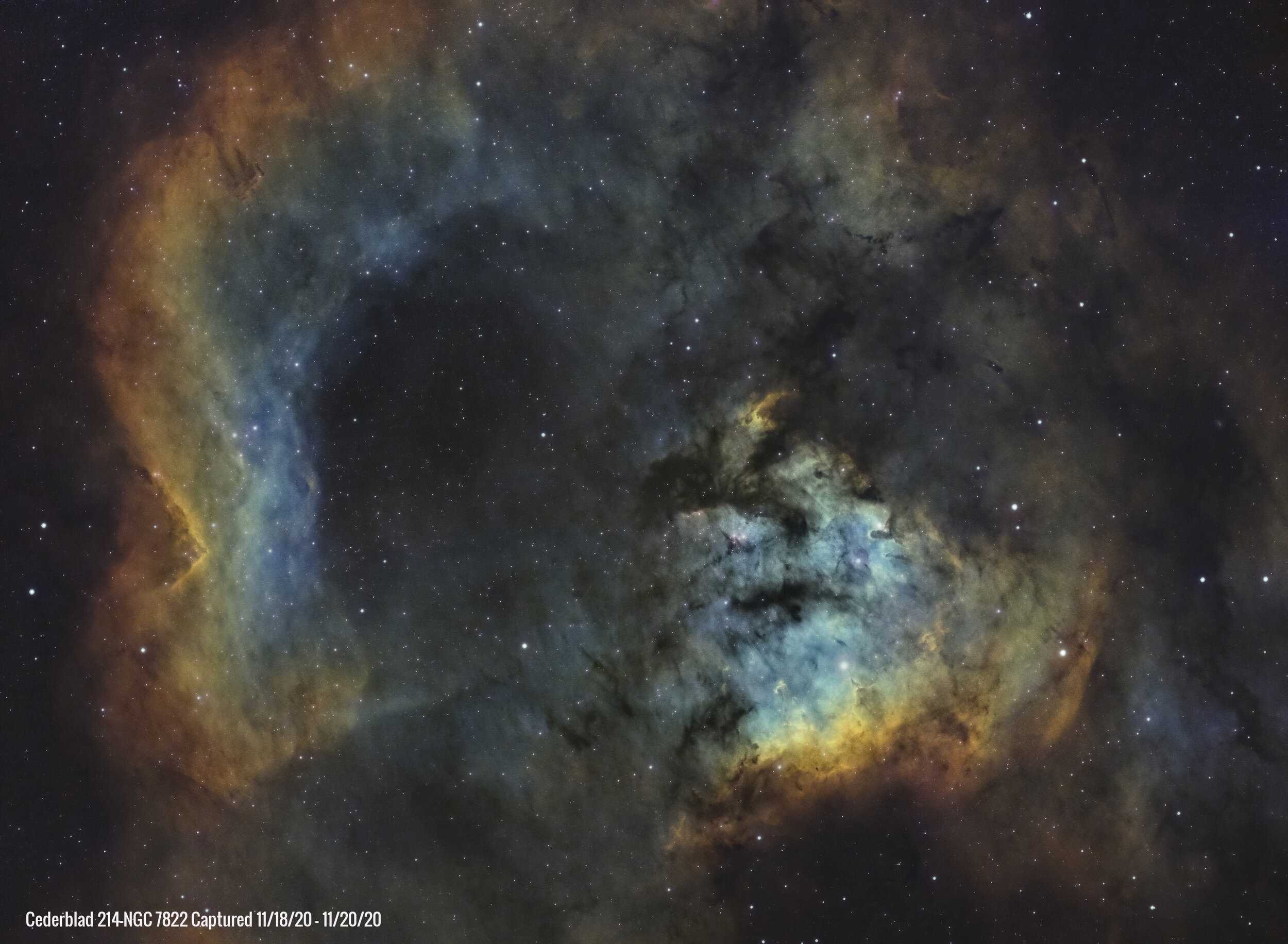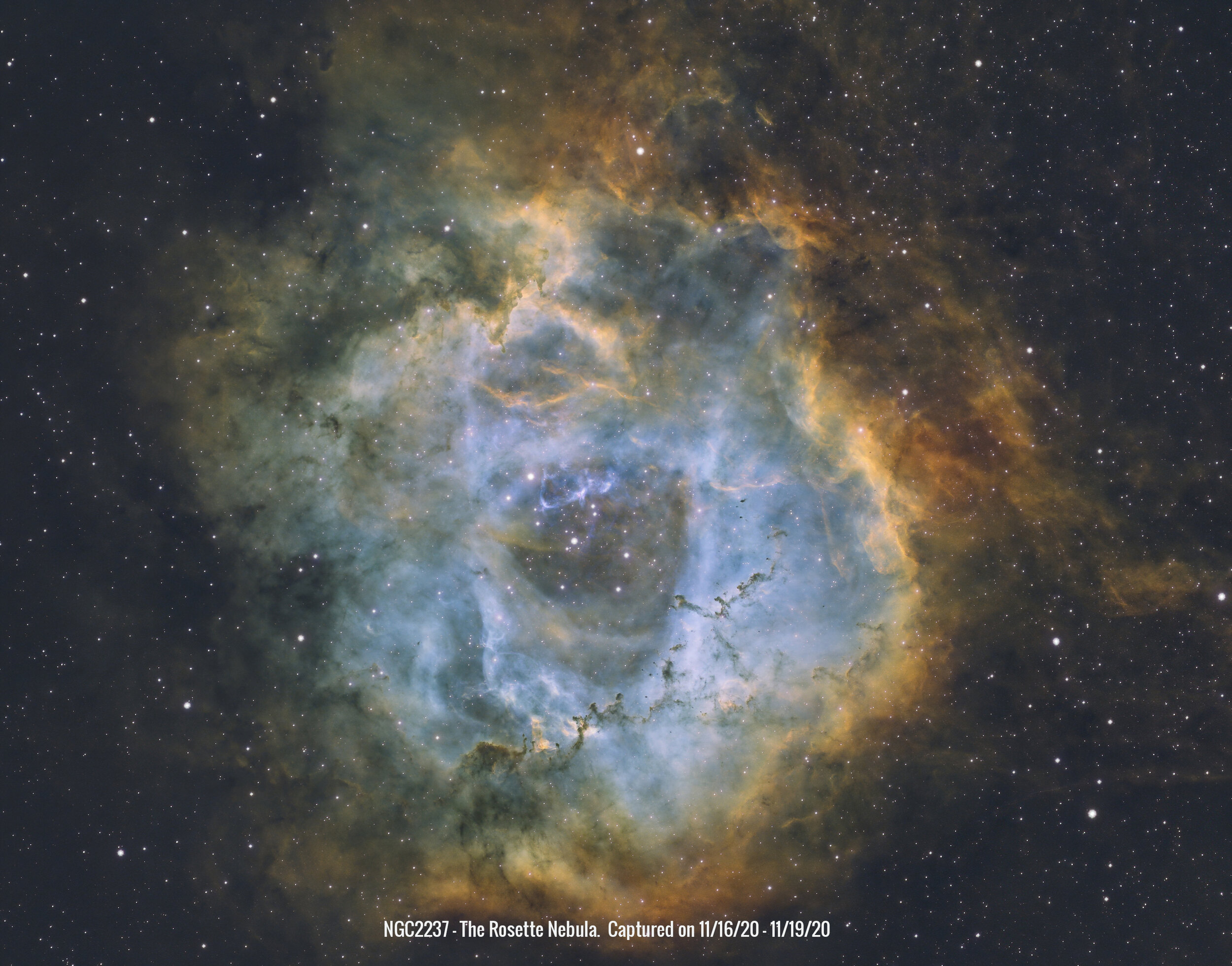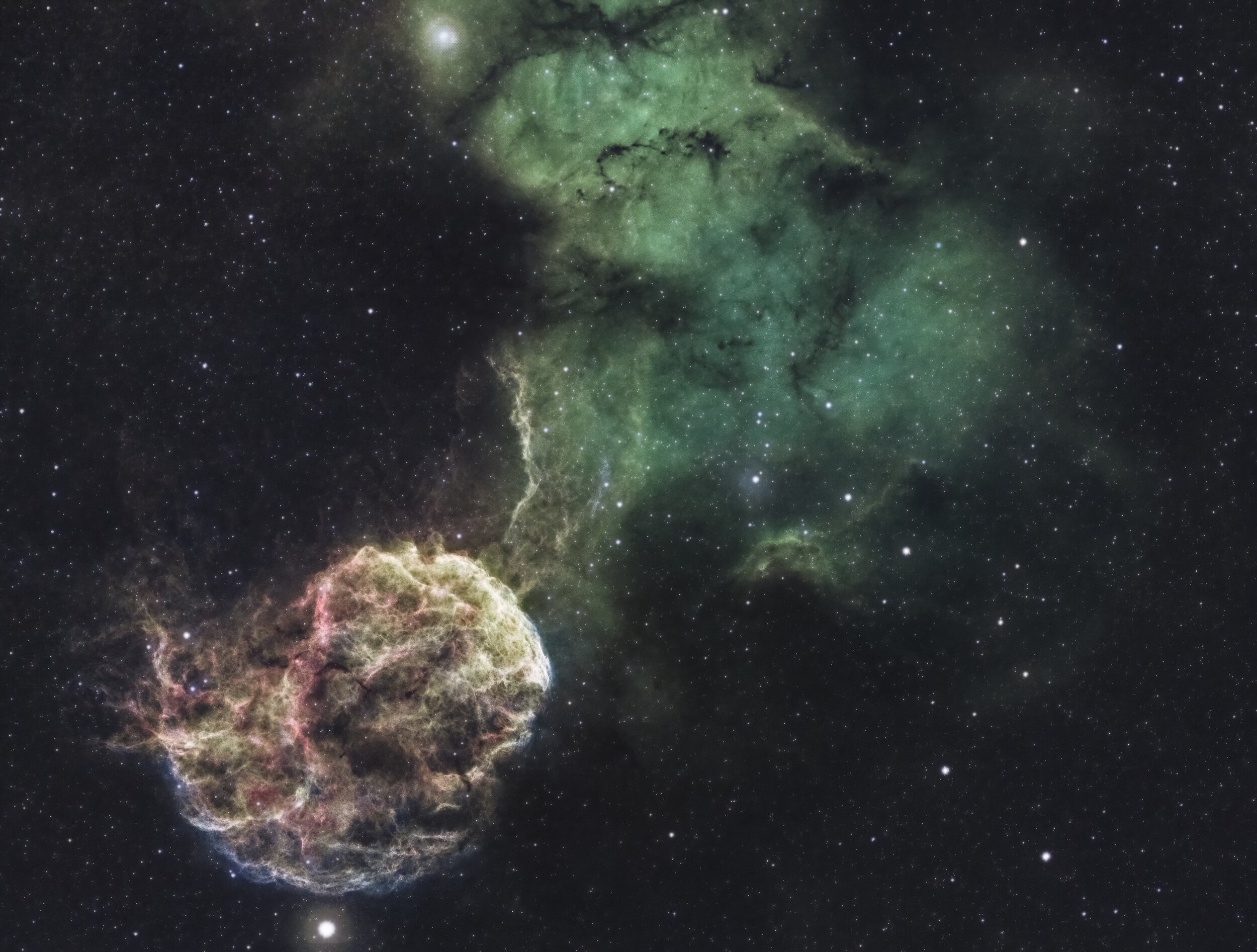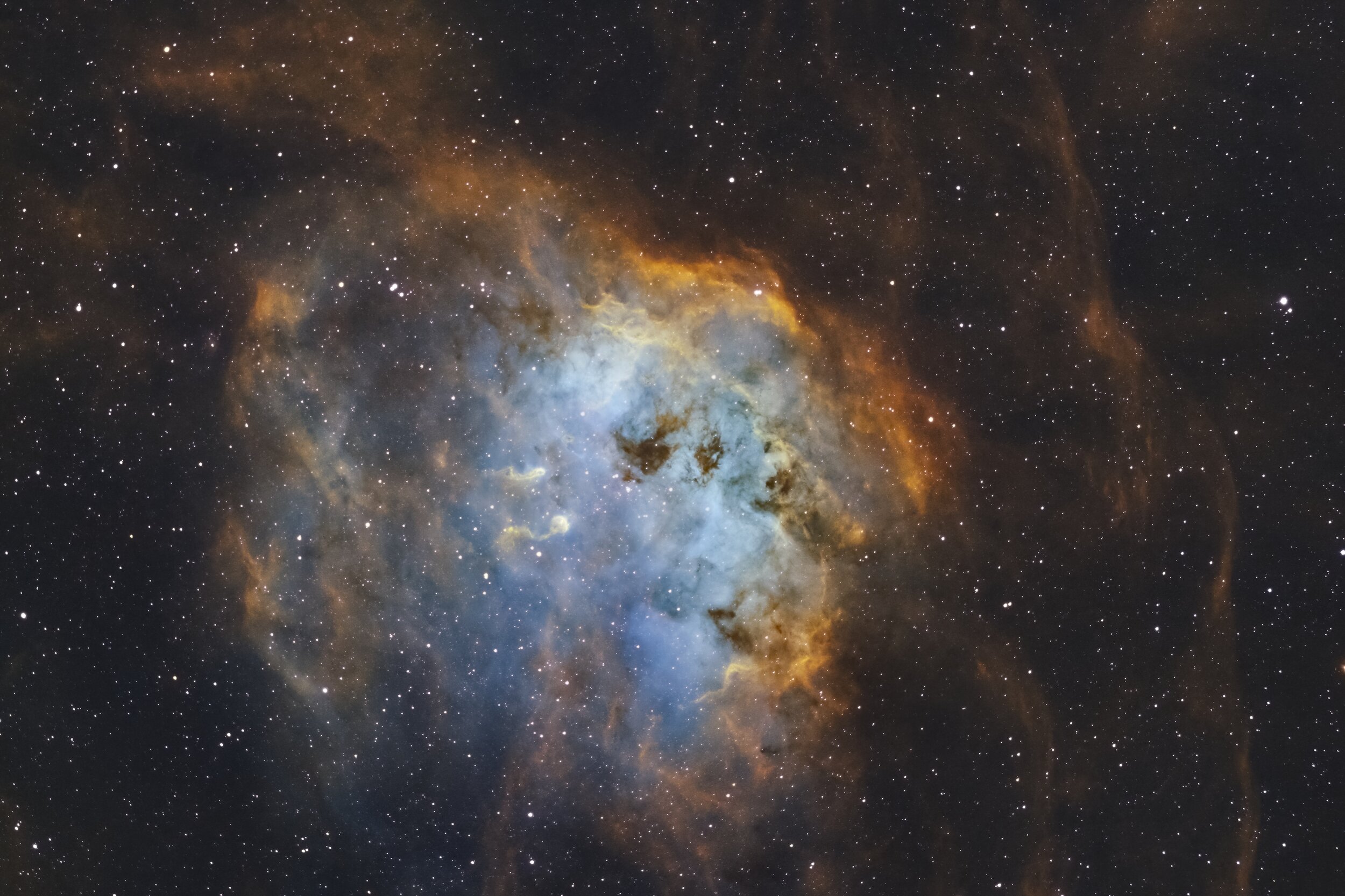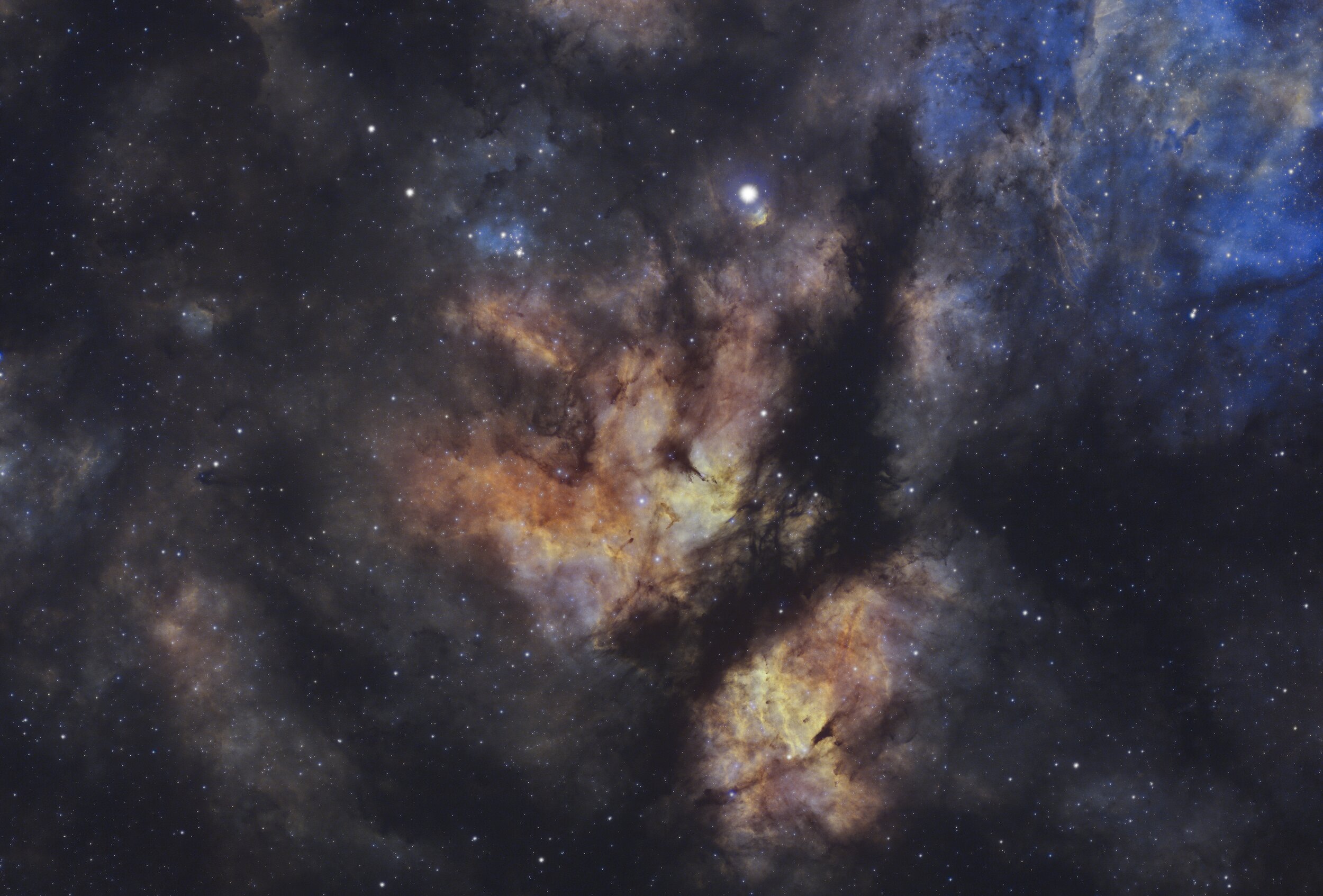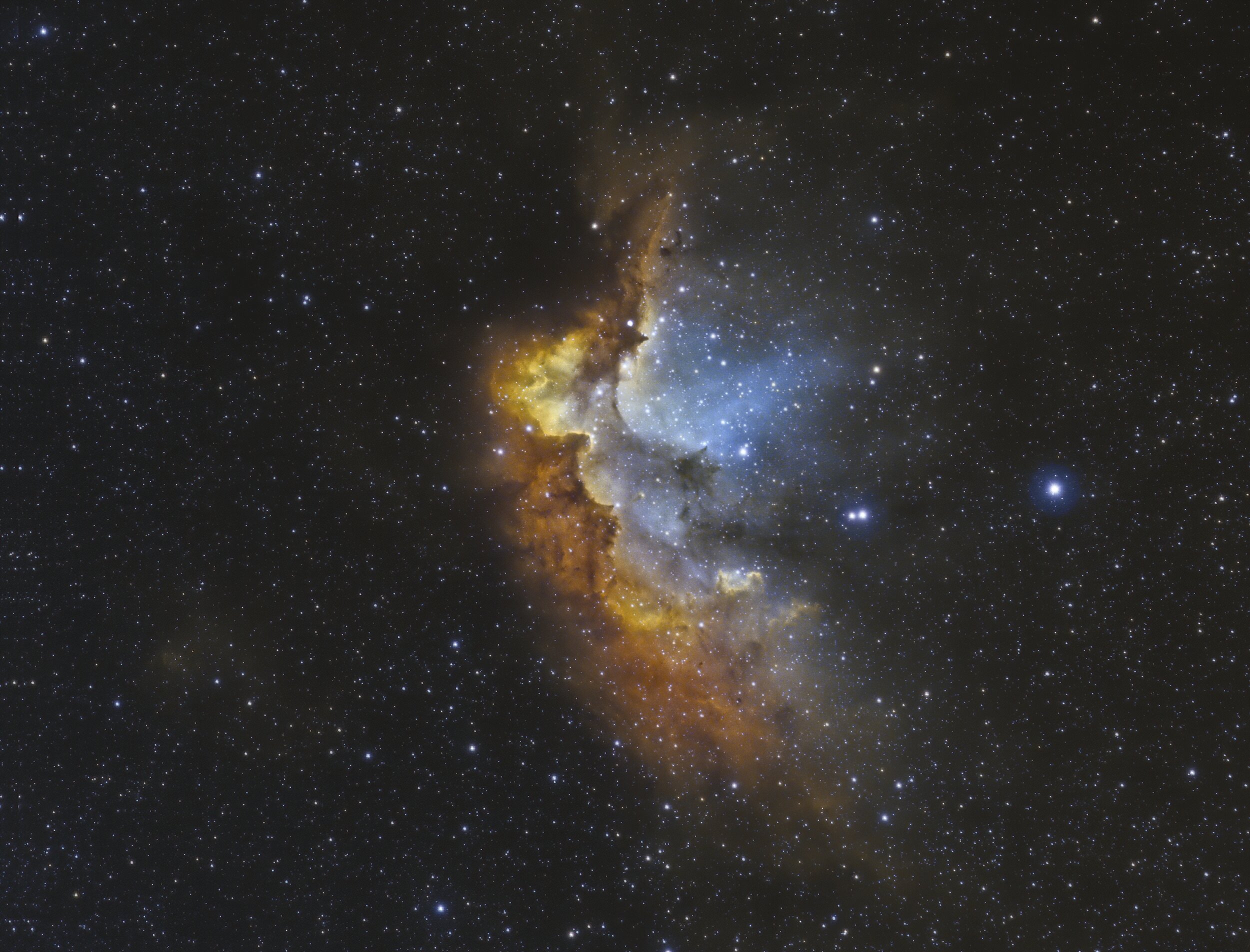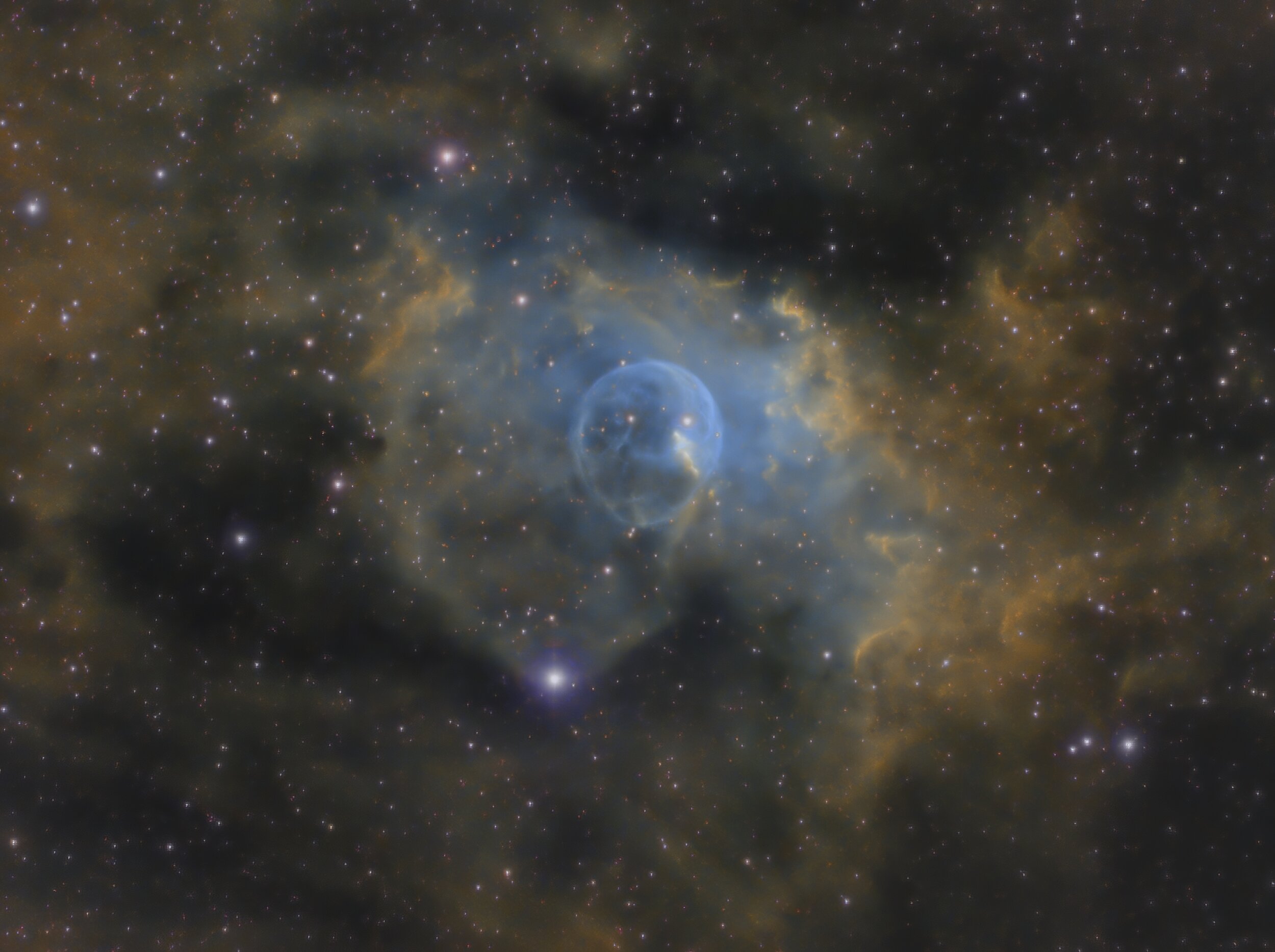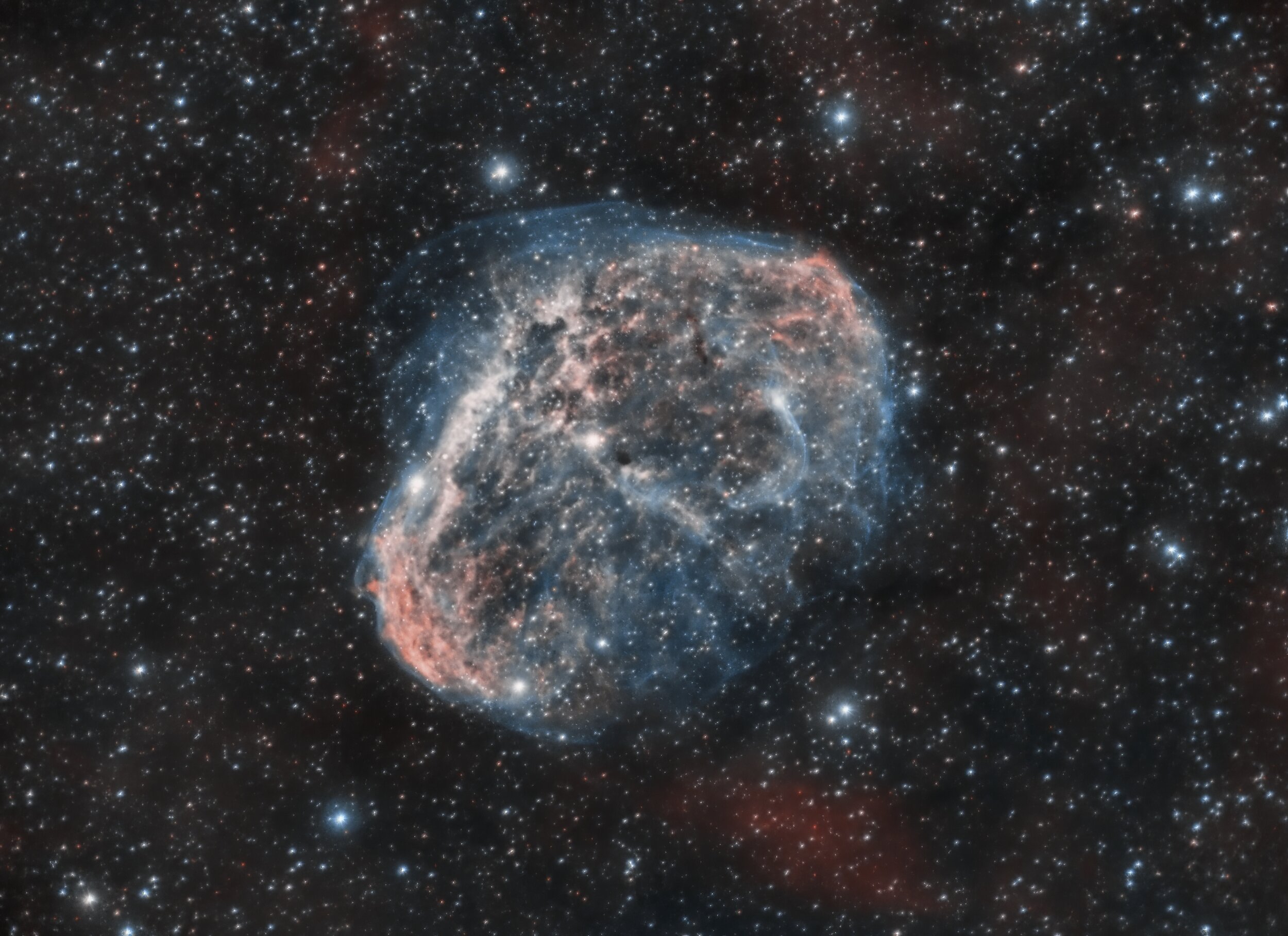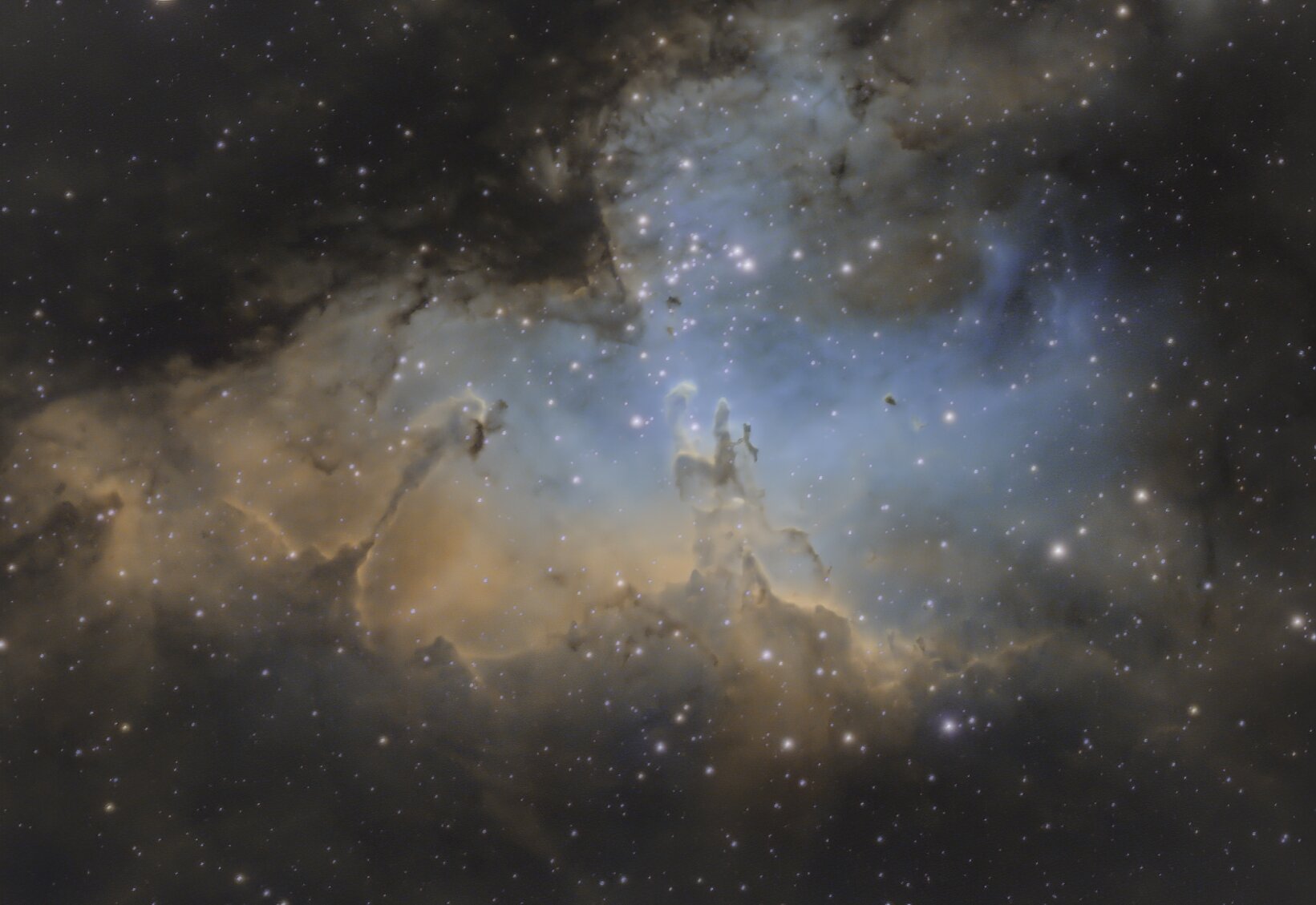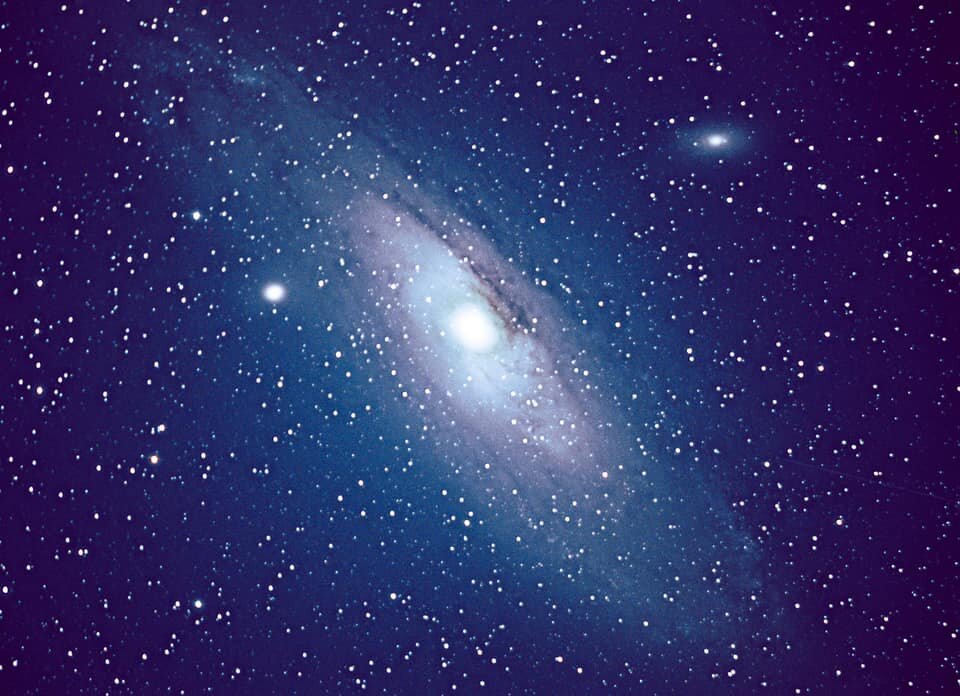Yes its square and it doesn’t look as cool as my asi071mc pro but based on images I had seen with the similar 1600mm, this was the way to go. So why is mono better? Well I am definitely not an expert but when I started separating out channels in my color processing, it finally started to click what a mono does and how it is processed. So the difference between a mono camera and a color camera is basically a filter that sits over the sensor on a color camera and it lets red, blue, and green colors through. Well while that gives you awesome instant color images in real time on your ipad when imaging, you are missing out on many light photons that are just getting filtered out. With a mono camera, you shoot one color or signal at a time. The sensor is much more sensitive and receives much more of the color/signal you are shooting (just have to do it one at a time).
Along with this comes the use of filters. There is a built in filter wheel on this camera so I bought a set of narrowband filters. H-alpha, sulfur II, and oxygen III are the 3 most dominate wavelengths that make it down to our cameras from space. So that being said, I would need to shoot separate sessions of each of those wavelengths and ASSIGN a color to them in post processing. This was hard for me to understand at first but basically you take your h-alpha image and assign it to green, sulfur II is assigned to red, and oxygen III is assigned to blue. It is known as “false” color. But now you have MUCH more data, separate color channels, and a much better image to start processing. Here’s what I got with my first attempt -
